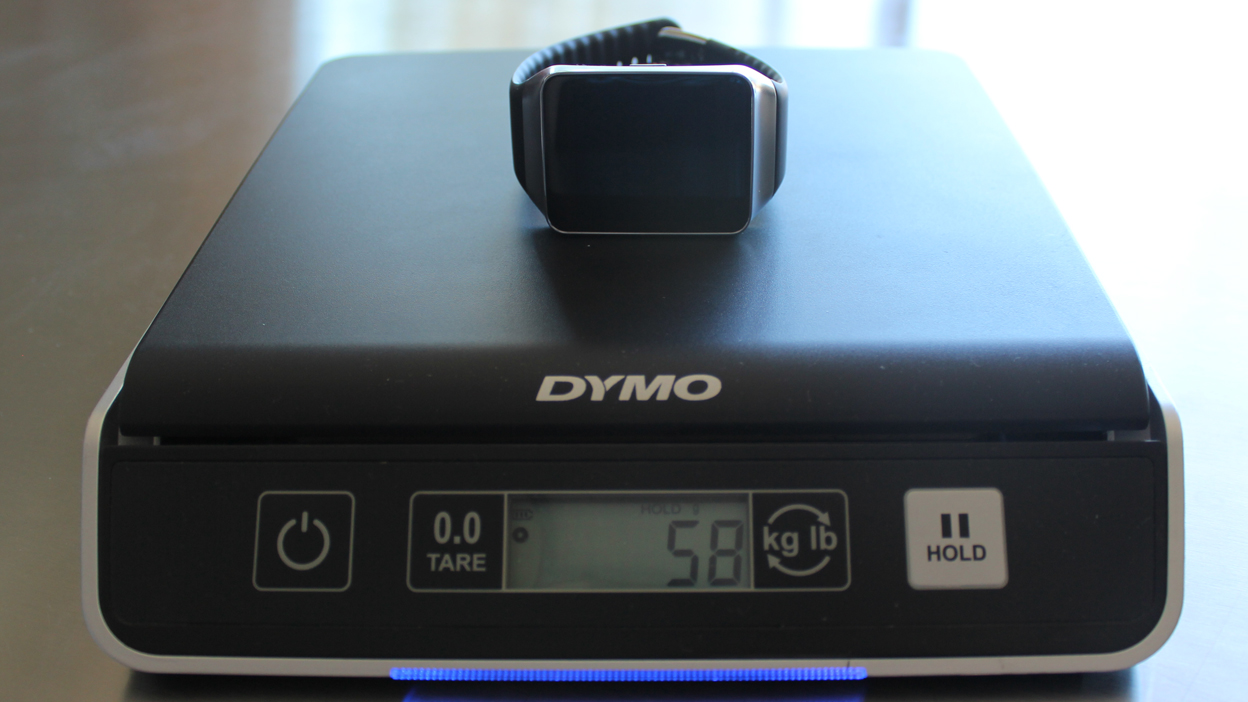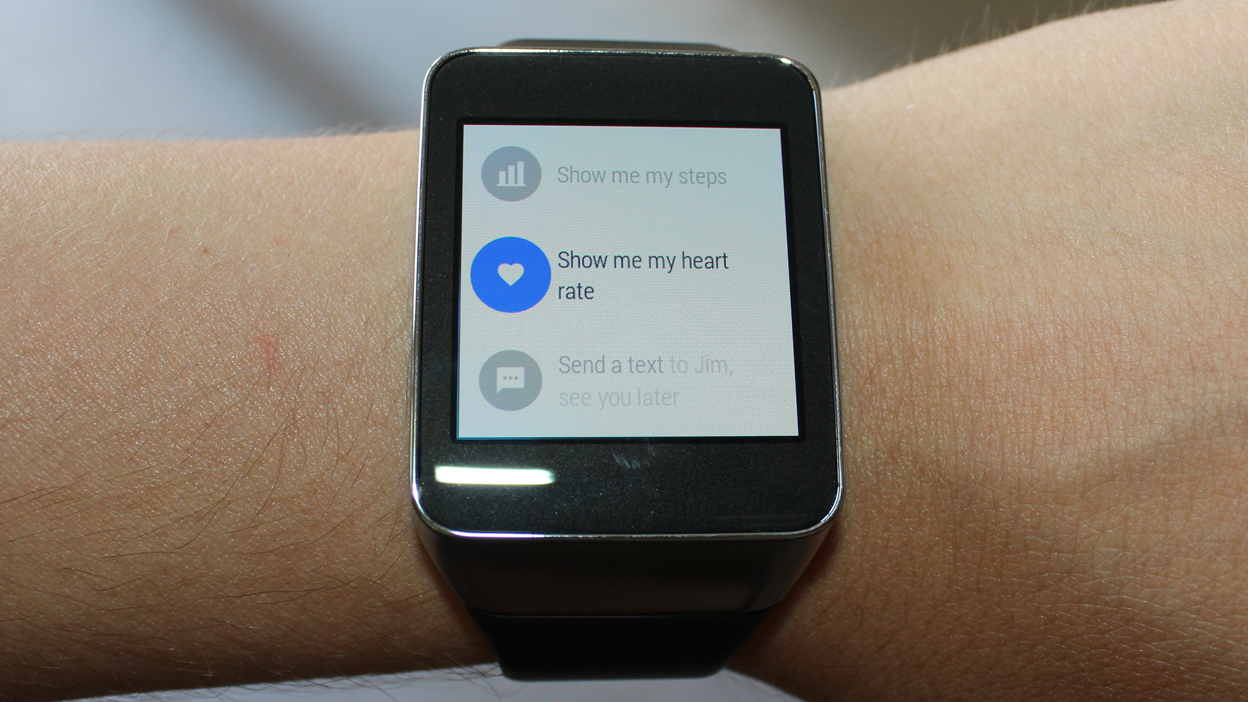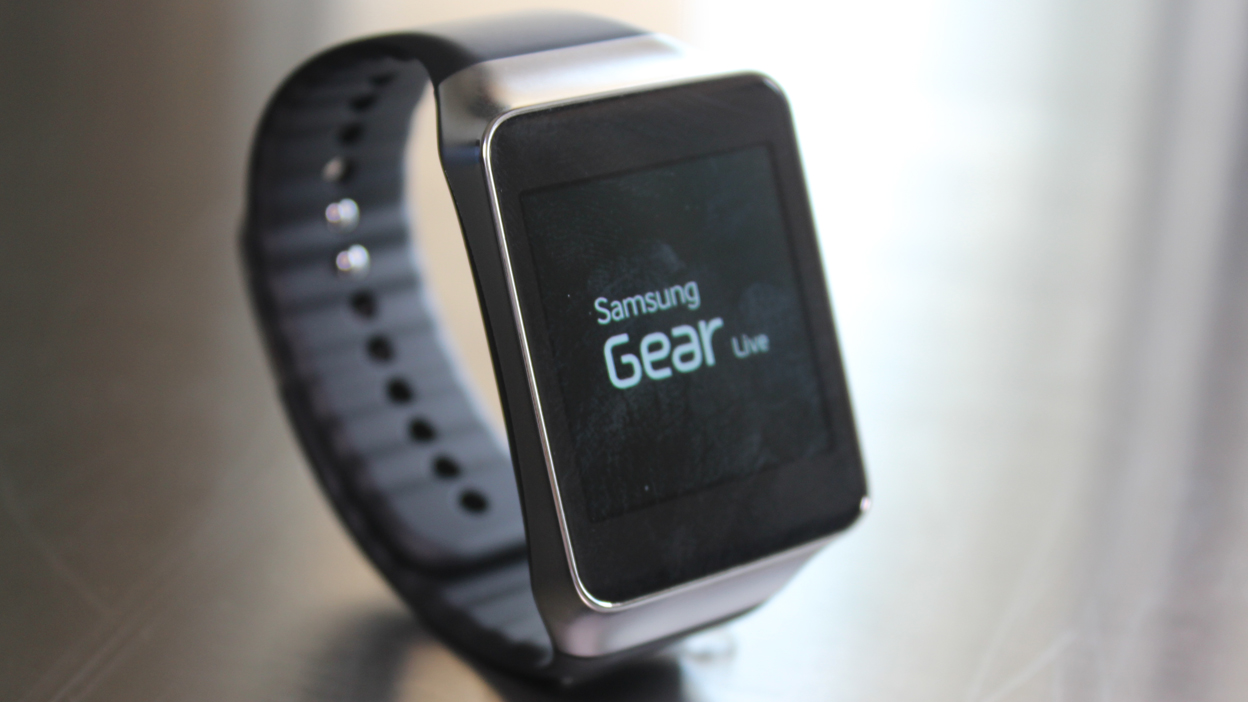Why you can trust TechRadar
Samsung Gear Live sticks with the 512MB of RAM, 4GB of non-user-replaceable internal storage and a 300mAh battery, all of which is like its still-available Tizen-powered watches.
However, it bumps up the processor from a 1GHz dual-core chip to a slightly faster 1.2GHz Qualcomm Snapdragon 400, which handles the simplified Android Wear without delay.
It does this while actually dropping some weight. Gear Live's 2.1oz (59g) fits in between the Gear 2's 2.9oz (68g) and lighter Gear 2 Neo's 1.9oz (55g) configurations.

This is due in part because the Gear Live is not rigged with the Gear 2's unnecessary outward-facing camera. And we're specifically calling an outward-facing camera unnecessary.
We're not going to argue if manufacturers one day turn their camera sights on us. No, not for selfies, but for Dick Tracy-style video calls via Google Hangouts. For now, the camera equipment is thankfully "Over and out!"
Samsung Gear Live still retains a discrete heart rate monitor on the opposite side of the watch face. Gyro, compass and accelerometers are tucked into this watch along with Bluetooth 4.0 for that all-important connection to your compatible phone running Android 4.3 or above.
A different sort of compatibility, the specs are safe from water damage to a point. It's not quite waterproof, but it is water resistant with a rating of IP67. That means it's safe at a depth of 1 meter for 30 minutes.

That's far short of the sensors and antennas found in the Samsung Simband prototype and actually less than the IR and NFC-included Gear 2 and Gear 2 Neo.
However, the Samsung Gear Live specs only serve to power Android Wear, the interface that's the real star of this familiar smartwatch design.

